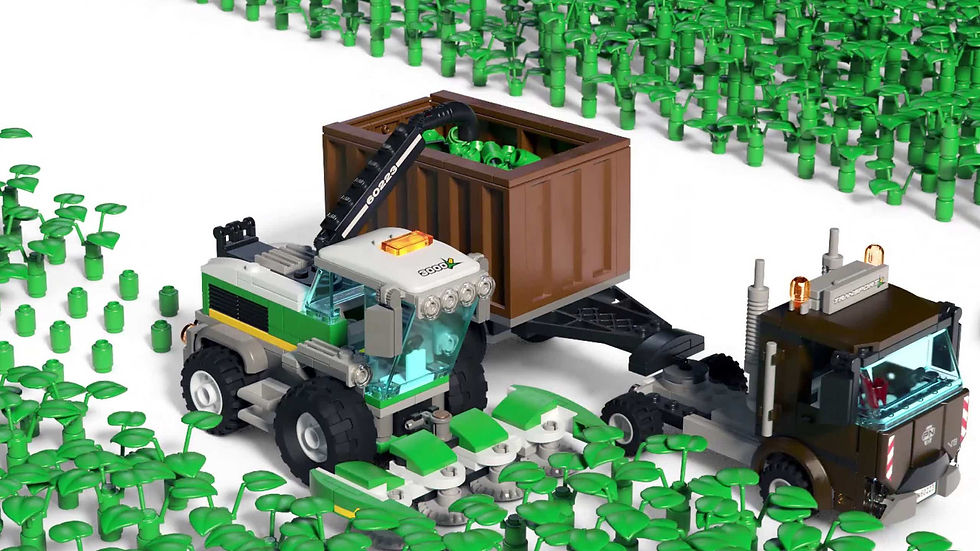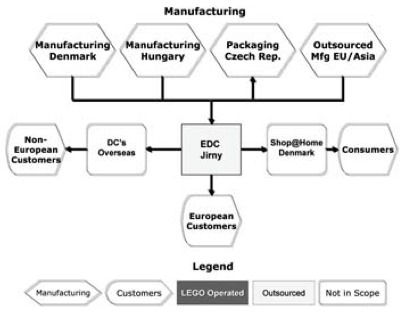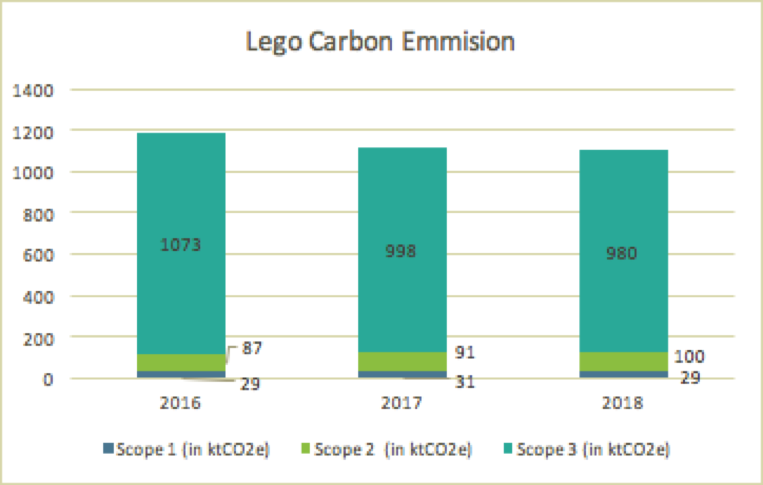Is Lego's Business Model Sustainable Enough?
- aqmal zullif
- May 27, 2020
- 3 min read
Updated: Mar 31, 2021
Despite diversifying their business and looking into different source materials, the company's primary product is made of plastic. With recent promises to be more sustainable & create real impact have they actually changed to achieve this.

Lego group is known for its innovative interlocking brick toys and play sets which has reached a broad range of customers. Over 60 years, it has moved past handmade wooden toys to mass producing plastic toys, including a range of franchise brands (Lego, 2018). Presently, the company has diversified its products and services to video games, television shows, movies and theme parks.
"To Inspire and develop the builders of tomorrow"
- Lego, 2018
The company aimed to simplify its mission to focus on their "real" customers, children. They believe by being more sustainable not only will it reduce carbon emissions but also inspire their consumers to "go green".
Can a company that mass produces products that are shipped globally on a daily basis actually aim to be green yet operate at the same capacity ?
Sustainabilty Impacts
Economic Factor
To produce Lego’s plastic toys a lot of energy and resources are allocated which may be unsustainable. Recently, Lego announced its move to produce its plastics from ethanol sourced from Brazillian sugar canes instead of fossil fuels. Although this reduces energy consumption and carbon emission, harvesting the raw material is unsustainable. This particular ethanol has been found to be produce on marginalized land. Instead of being used for food production, foreign agricultural companies create poor working conditions to accumulate large amounts of ethanol. Developing countries like Brazil are being exploited. There is also a significant loss in domestic income as local farmers are not given the opportunity to use these lands. Additionally these company may create a false demand which distorts the productive capacity of the developing country.
Societal Well-Being Factor
From the initial business model, it is difficult to identify Lego’s societal impact. However, we understand its core offering of innovation in its product for young consumers. Lego is dedicated to children development, ensuring 25% ownership of its entire company to their children foundation (Lego Responsibility Report, 2018).
Unfortunately, it was found that there is a lack of cultural and gender diversity in its products. Lego’s marketing was also found to commonly leave out girls and non-European cultures as a target market. This adds to the common discrimination women and people of colour face.
Environment Factor
Focusing on Lego’s value chain, the tiered distribution process to deliver its products accumulates carbon emission. Additionally, its primary product (toys) are made of plastic and involves wasteful packaging. The logistical operations by Lego can be seen in figure 1.

Figure 1 - Lego's Operation
It should be acknowledged that Lego has moved to centralize its distribution in Denmark reducing their carbon footprint. However, the company still ships their toys from factories in various parts of the world, where waste created is attributed from packaging. The European Environment Agency has also found shipping to be the primary cause of diminishing air quality and greenhouse gases accross the continent. Setting a more centralized supply chain may be risky for the company but will significantly reduce Lego's shipping carbon emission.
Further looking into carbon emissions, using data from Lego’s climate report 2018 we are able to observe the composition of carbon emission from 2016- 2018 as seen in figure 2.

Figure 2 - Lego Carbon Emission
There have been few changes in the level of carbon emitted within the 3 years. It is noticeable that a majority of carbon lies within scope 3, which relates to Lego’s supply chain. The low emission in scope 1 and 2 can be attributed by Lego’s initiative to use 100% renewable energy at their offices as well as factories. Despite this, it is important to review the extensive distribution channel Lego applies as it emits a significant amount of carbon yearly.
Final Considerations
To answer this article lets view how Lego performs in comparison to its competitor. Using Hasbro as a case, through comparative analysis and data from Bloomberg we are able to create Figure 3.

Figure 3 - Lego vs Hasbro Focusing on women participation, we follow the commonly used 30% club initiative standard where they seek for at least 30% female representation within leadership roles. Both Lego and Hasbro has achieved this in their Board.
However, Lego is underperforming in the context of workplace gender diversity despite Hasbro being able to achieve close to a 50/50 workforce. The lack of representation may have led to Lego’s marketing and products not gearing to girls. Furthermore, Lego is also underperforming in being more sustainable with its packaging.
The data and information presented solidify a need for adjustment within the organisation in order for them to achieve sustainable development. A reconceptualised business model would give us an alternative view into how Lego can achieve this. In particular the company needs to rethink their packaging materials and build a more diverse team.
Comments